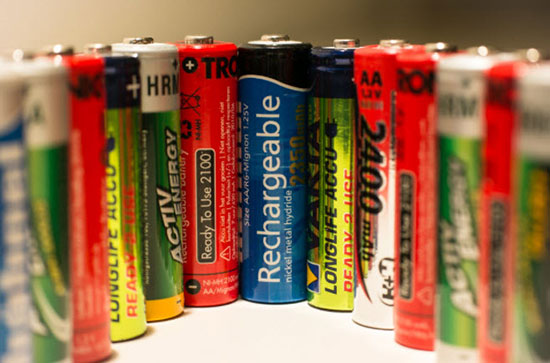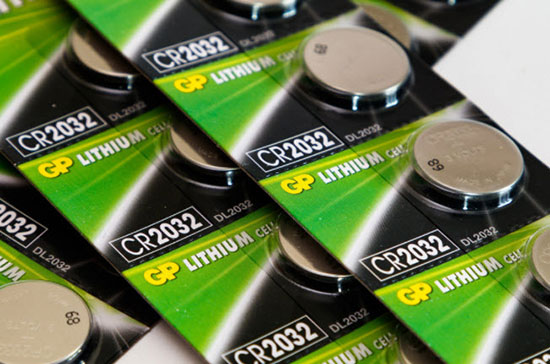制造商零件编号 4654
MINIBOOST 5V @ 1A - TPS61023
Adafruit Industries LLC
This multi-part series of articles investigate simple and readily available rechargeable battery options for makers. This first article introduces common rechargeable battery types and when to use them. Besides that, it also outlines a few basic and easy-to-implement methods for upgrading existing Arduino projects so that you can easily make them portable and rechargeable.
Three rechargeable battery technologies include Nickel-Cadmium (NiCd), Nickel-Metal-Hydride (NiMH), and Lithium Polymer (LiPo). Each of these is a good choice for maker projects, and they all have their benefits and drawbacks.
 Various rechargeable batteries.
Various rechargeable batteries.
Nickel-Cadmium batteries have a very high cycle count, and they are typically the cheapest of the three options. However, this type of battery has a relatively low energy density, so they offer less capacity per cell than the other two types. On the flip side, NiCd batteries can often deliver very high currents, which makes them perfect for power tools. Note that NiCd batteries contain toxic heavy metals, which makes them more difficult to recycle.
Nickel-Metal-Hydride batteries are similar to NiCd cells. However, NiMH batteries offer an improvement in capacity over NiCd batteries. One major drawback of NiMH cells is their high self-discharge rate.
Li-Po and Li-Ion batteries have a significantly higher energy density compared to typical NiMH and NiCd cells. However, this benefit also means that you usually pay more for Li-Po and Li-Ion batteries. Besides the increased price, lithium batteries always require monitoring by a battery management system, as these batteries are sensitive to improper handling. Note that Li-Po batteries come in various shapes and packages, of which some can be very flat. This makes Li-Po cells perfect for handheld devices such as modern smartphones.
Li-Ion batteries often come in larger sizes and are typically used in applications where size isn’t critical. Note that there is not a single type of Li-Ion or Li-Po battery. Instead, the category of lithium batteries comprises a whole range of different chemical formulations that all have their very own pros, cons, and recommended applications.
From the short section above, you can see that there is no one-size-fits-all solution when it comes to rechargeable batteries. Apart from the chemical formulation, physical size, and capacity of a battery, you should also think about how you're going to use that battery in your projects.
 CR2032 batteries are a commonly found often non-rechargeable Lithium cell perfect for long-running low-current applications such as remote controls and backup batteries in PCs.
CR2032 batteries are a commonly found often non-rechargeable Lithium cell perfect for long-running low-current applications such as remote controls and backup batteries in PCs.
Typically, Arduino projects don’t require high currents. Instead, you usually want to maximize the runtime between charges. Therefore, it makes sense to use high-capacity batteries that may not be able to deliver high currents spontaneously. Some other applications, such as electric bicycles or power tools, might not need a very long runtime between charges. Instead, you want the battery to deliver a lot of power when needed.
If you’re looking into options to power your Arduino projects on the go, the form factor of NiMH cells is a huge advantage over other rechargeable battery types. NiMH batteries are considered a direct rechargeable replacement for regular alkaline batteries. Therefore, the rechargeable cells have the same form factor as standard alkaline cells. However, NiMH batteries have a slightly lower output voltage of 1.2V compared to the 1.5V standard alkaline batteries deliver when fully charged.
These two aspects mean you can use readily available parts, such as typical battery holders, to power your Arduino project without needing a fixed power supply. You might, however, need to add an external step-up circuit to sufficiently supply the Arduino board, depending on the number of cells in use. To recharge the batteries, you can remove them from the holder and use an external charger. Alternatively, you can incorporate a charging circuit into your Arduino project. NiMH cells have the added benefit that they are easy to charge and generally safe to use. Therefore, the charging circuit is simple, small, and cost-effective.
Three rechargeable battery technologies include Nickel-Cadmium (NiCd), Nickel-Metal-Hydride (NiMH), and Lithium Polymer (LiPo). Each of these is a good choice for Arduino projects, and they all have their benefits and drawbacks. As with many other things, no battery solution will work universally well across the entire spectrum of electronics projects. Some batteries are well suited for long-running low-current applications, while others can handle sudden current spikes more reliably.
Typically, Arduino projects don’t require high currents. Instead, you usually want to maximize the runtime between charges. Therefore, it makes sense to use high-capacity batteries that may not deliver high currents spontaneously.
NiMH batteries are considered a rechargeable replacement for alkaline batteries. Therefore, you can facilitate readily available hardware, such as battery holders, to quickly make an Arduino project portable. To charge the batteries, you can either employ an external charger or implement a simple NiMH charging circuit monitored by the Arduino.